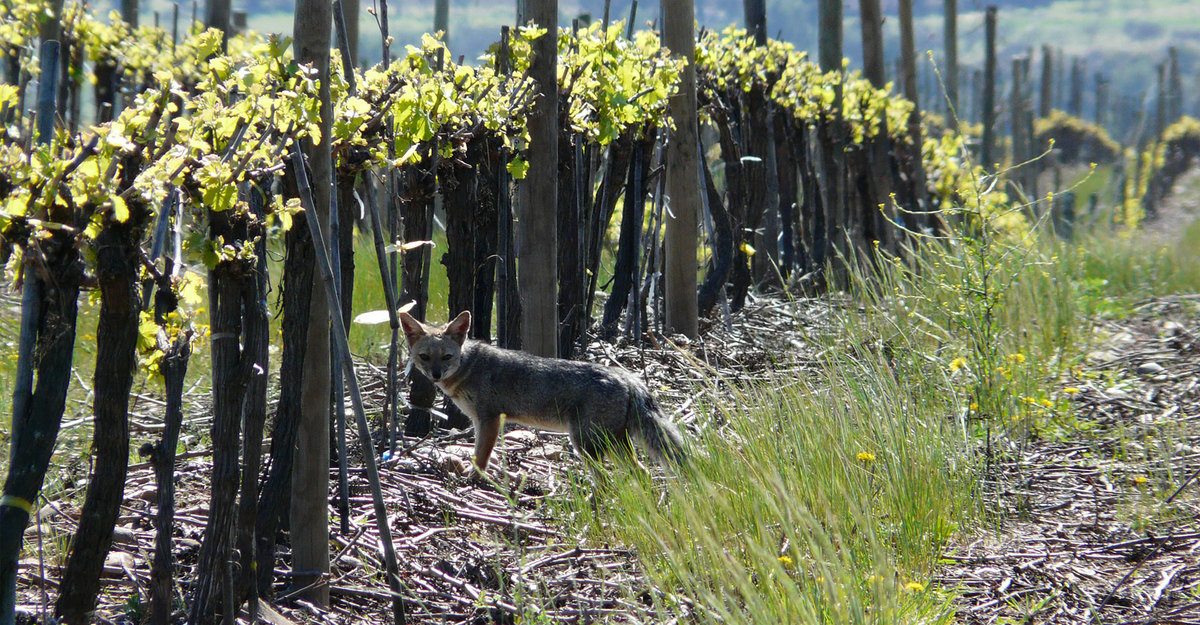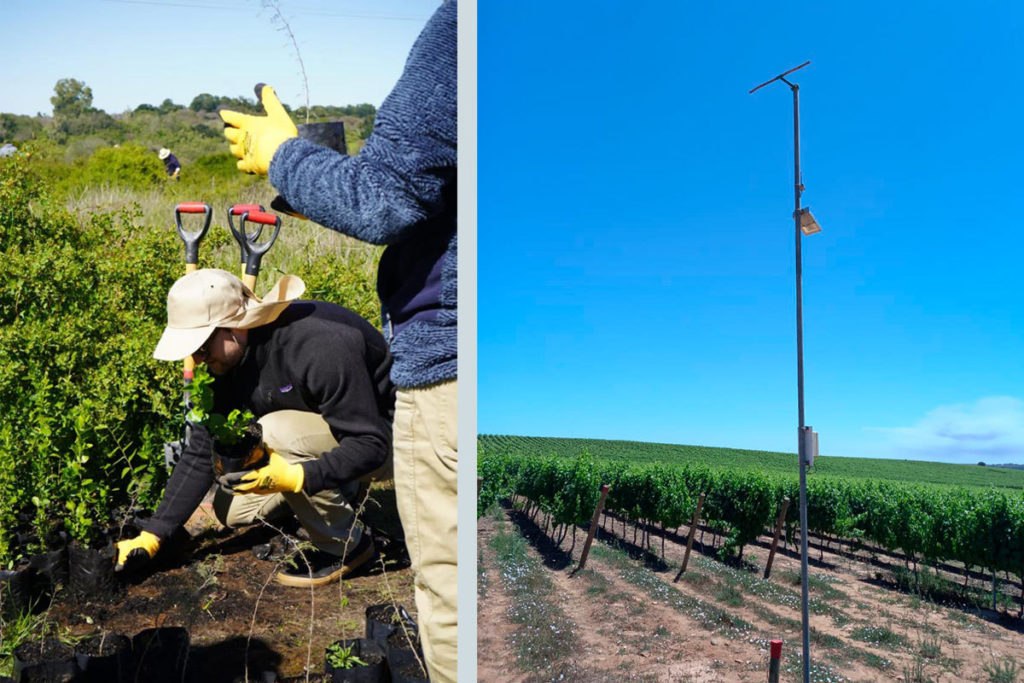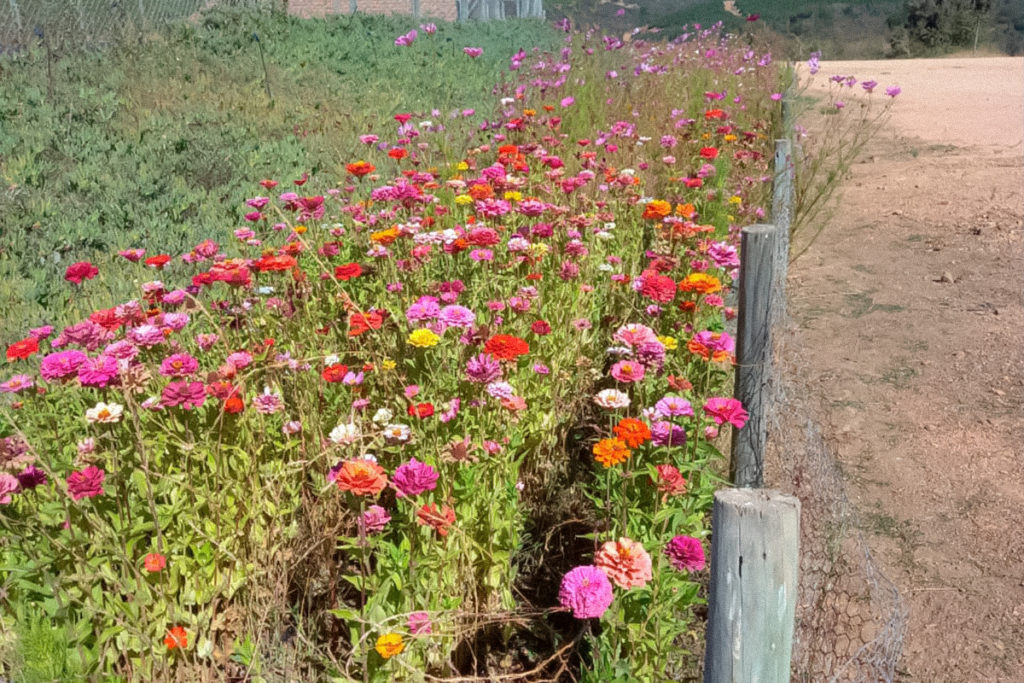Five actions that protect biodiversity at the Ucúquer Vineyard


Here are five actions we take at the Ucúquer Vineyard (Colchagua Valley) in the production of our fresh and mineral Gran Reserva Sauvignon Blanc.
To promote biological control in the vineyards, seven birdhouses were located throughout the Ucúquer property, all varying in size. Thanks to ongoing monitoring to identify the species that inhabit the area, we were able to confirm that four of these birdhouses are currently occupied by owls that feed off of rodents and amphibians. We have also spotted American kestrel, house wren, and Chilean barn swallow, which act as biological controllers that feed off of insects.
The use of bird perches as an environmental restoration strategy is another one of the actions we have taken on the Ucúquer estate. These structures support birds to perch, regurgitate and defecate, which favors the spreading of the seeds. At the Ucúquer Vineyard, nine perches under continuous monitoring attract birds passing by the vineyard and facilitate the hunting of birds of prey.

Reforestation and perches.
Another action we have taken to increase the presence of native wildlife is the installation of drinking fountains in specific estate sectors. These act as watering holes for the existing wildlife and connect the different biological corridors. There are currently eight drinking fountains made from wooden barrels, which also contain aquatic plants that help purify the water.

Pollinator garden.
Implementing pollinator gardens is an initiative that uses different flower species to maximize the potential for attracting beneficial insects, offering refuge and food for the pollinators that inhabit the Ucúquer estate. In alliance with Syngenta AG (an agricultural science and technology supplier, particularly of seeds), the work consists of a seed collection and planting process. It is followed by the maintenance and care for the mix of 10 different flower species, including Toadflax, Poppy, Phacelia, Cornflower, Zinnia, Marigold, Baby’s-breath, Cosmos, Pot marigold, and Coneflower. Each of these species is intended to attract a particular insect.
Across all of the vineyards that give birth to the Gran Reserva wines, there are 5.31 hectares available for reforestation. In 2022, we planted 7,500 trees in our main estates, including the Ucúquer Vineyard. These trees are in addition to protecting nearly 500 hectares of protected forest. The goal is to reach 30,000 trees planted by 2025 so that Gran Reserva can fulfill its commitment to biodiversity and nature.
We comply with the highest standards of verified social and environmental performance, transparency, and legal responsibility to balance benefit and purpose.
We adopt an Impact Business Model, creating beneficial links between business, community, and environment.
The Gran Reserva vineyards are an important part of the project to conserve native forest areas and protect local biodiversity. Our native forests have the ability to retain rainwater and control the kind of climate change that results from water shortages.
We take care of 1,432 hectares of protected forests and, on average per vineyard, a total of 105 species of fauna and 48 species of registered flora.
Our effort to preserve nature begins with responsible water consumption. 99% of the water we use comes from surface and subterranean sources.
Our vineyards are drip irrigated, which translates to a 90% efficiency on water consumption, and over the past 3 years, we’ve reduced our water footprint by 10%.
All of our winemaking processes require the use of energy. Our choice to invest in clean, renewable energy reflects our desire to co-create a sustainable planet for the future.
100% of the electricity used to make the wines in the Gran Reserva collection come from renewable sources, including solar energy.
Concha y Toro has been certified under the Wines of Chile Sustainability Code since 2012, which means that our vineyards are officially recognized as sustainable vineyards.
The wines in our Gran Reserva collection are crafted entirely from estate-owned grapes in sustainably managed vineyards.